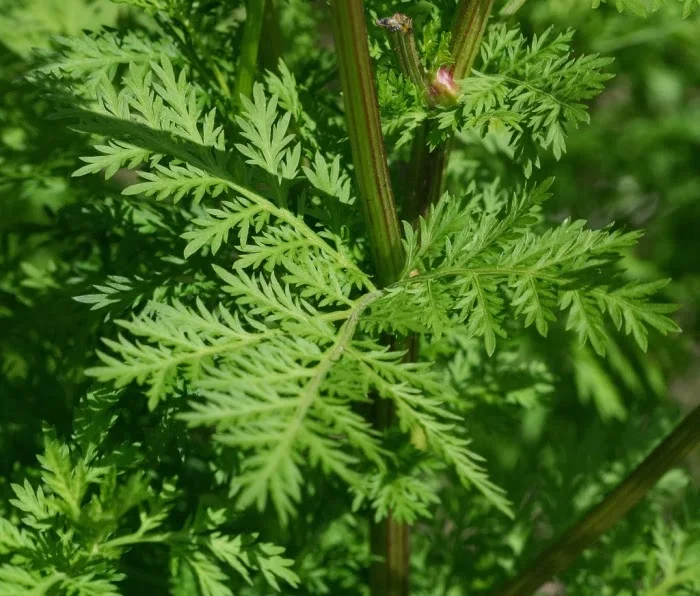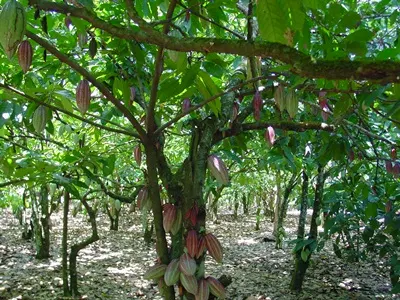By Liliana Usvat
Namely,
according to the researches published in “Life Science”, artemisinin, a
“Sweet wormwood” or “Artemisia Annua” derivative, was used in Chinese
medicine and it can kill 98% of lung cancer cells in less than 16 hours.
- See more at:
http://www.healthyfoodhouse.com/amazing-herb-kills-98-cancer-cells-just-16-hours/#sthash.7ARJsaKL.dpuf
Wormwood, also called Sweet Wormwood, Sweet Annie, Sweet Sagewort and other such names, is ARTEMISIA ANNUA. It's, a native of Eurasia. It's a common weed in much of the US, especially the east-central states.

Sweet wormwood (Artemisia annua) a shrub with fern-like leaves and bright yellow flowers. It's a member of the Asteraceae family and usually flowers between August and September. This plant thrives in direct sunlight and enjoys a variety of soil conditions. Native to Asia, it is now found throughout the world, especially in temperate zones at altitudes between 1000 and 1500 meters.
Artemisinin is the Key Antimalarial Constituent
Etymology

This plant has been used for decades in the treatment of many diseases, including dermatitis. Recently (after 1970) has been used against malaria, in fact, this plant is the active ingredient artemisinin antimalarial that has a significant function .
History
Artemisia annua has been used by Chinese herbalists
for more than two thousand years in the treatment of many illnesses,
such as skin diseases and malaria. The earliest record dates back to 200
BC, in the "Fifty-two Prescriptions" unearthed from the Mawangdui Han Dynasty tombs.
Its antimalarial application was first described, in Zhouhou Beiji Fang ("The Handbook of Prescriptions for Emergencies", Chinese: 肘后备急方), edited in the middle of the fourth century by Ge Hong. In that book, 43 malaria treatment methods were recorded.
according
to the researches published in “Life Science”, artemisinin, a “Sweet
wormwood” or “Artemisia Annua” derivative, was used in Chinese medicine
and it can kill 98% of lung cancer cells in less than 16 hours. - See
more at:
http://www.healthyfoodhouse.com/amazing-herb-kills-98-cancer-cells-just-16-hours/#sthash.5r8zIkVw.dpuf
Uses
according
to the researches published in “Life Science”, artemisinin, a “Sweet
wormwood” or “Artemisia Annua” derivative, was used in Chinese medicine
and it can kill 98% of lung cancer cells in less than 16 hours. - See
more at:
http://www.healthyfoodhouse.com/amazing-herb-kills-98-cancer-cells-just-16-hours/#sthash.5r8zIkVw.dpuf

Sweet Annie is used in tea from leaves and flowers dried or not.
Tea made from Sweet Wormwood is anything but sweet. It's fairly bitter and medicinal tasting, and most people would despise it.
- antibacterial (blocks the generation of bacteria);
- antiseptic (property to prevent or slow the growth of microbes);
- carminative (promotes the release of intestinal gas)
- digestive;
- febrifuge (lowers body temperature).
- kill 98% of lung cancer cells in less that 16 hours with no impact on healthy cells
- anti-malarial natural product
- good for treating worms
- used for fevers,
- bleeding and
- for conditions of the digestive tract like flatulence and
- diarrhea.
- Asthma: Prepare an inhalation by pouring one cup of boiling water onto some fresh or dried Artemisia leaves, and put the container on a low heat.
- Hemorrhoids: This is the oldest recorded use of Artemisia tea in traditional Chinese medicine. Drink one liter of Artemisia tea each day.

- Stomach and Intestinal Problems, e.g. ulcerative colitis, Crohn’s disease, diverticulitis and chronic dysentery, also various rheumatic diseases, arthritis, soft-tissue rheumatism, borreliosis, babesiosis: Take Artemisia tea in the higher dose for 7 days, and then in the lower dose until the symptoms disappear. Artemisia disinfects the system and modulates the immune system (brings it back into balance).
- including gout, diabetes, high blood pressure, warts, osteoporosis, epilepsy, glandular fever, migraine, psoriasis and leishmaniosis. The gate is wide open for further research! The patients take tea using 5g of Artemisia each day for a week.

- Skin problems; athlete’s foot, hemorrhoids, eczema: Use Artemisia ointment for its mild antiseptic effect. Pulverize 5 g (for hemorrhoids 2.5 g) of Artemisia leaves and mix with 100 ml of vegetable oil (the best is olive oil, otherwise peanut or sunflower oil). Heat this mixture on a water bath for 1 hour. Filter the mixture through a cloth, add 10 g of melted beeswax and immediately pour into containers (e.g. clean film canisters). Use within 1 year. Always apply on WET skin and rub in well.
Natural habitat

Native to Eurasia, from south-east Europe (including Albania, Bulgaria, Montenegro, Romania, Russia, Serbia, Turkey) to Vietnam and northern India. Naturalised in many countries (including Argentina, Austria, the Czech Republic, France, Germany, Hungary, Italy, Poland, Slovakia, Spain, Switzerland and the United States). It has even been occasionally recorded growing wild in the UK, arising from bird seed or wool shoddy, and has been cultivated experimentally as far north as Finland.

Natural habitat of Artemisia annua var. macrocephala alond rivers between redgrase.
Beautiful olive green foliage and with tiny flowers. This plant is excellent as a filler in any flower arrangement or any dried flower project. It's main use however is for it's stunning long lasting aroma which can fill the house with just a tiny movement of one small sprig. It is excellent for use in wreaths and other aroma projects. It's scent is strong and very pleasant, unlike any other plant.
Blog 136-365
























